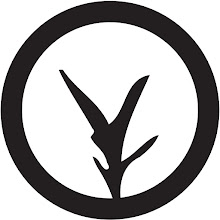Lets get right down to it. You want to try your hand at making your very own paper. Sounds complicated, but it is quite simple. You need paper to make paper. The kind of paper you use will determine the kind of paper you get, and you can get pretty creative with it.

::STEP 1::
Supplies
Wood frame (you can use an old picture frame)
Fiberglass screen
Staple gun
These items can be found at Home Depot.
Just stretch the screen tightly over the frame and staple into place with the staple gun. (Watch your fingers!)

Deep tub or plastic basin like this:

It must be larger than your frame so that your frame
may be totally submerged.
I used a cement mixing tub that I got from home depot for a few dollars. It works perfect and fits the larger 12x12 frames.
Blender:
(I used a margarita blender.. you DON'T need the pour spout, mine just happens to have one.)

Scrap paper:

Any kind of paper will work for this, I usually mix up what I have in my scrap paper stash. Old bills, letters, scraps from crafts, magazines, tissue paper, construction paper, napkins, you name it.
For thick paper use postcards, old greeting cards, advertisements, etc.
I usually use a mix of both for a medium stock paper. I use this for my soap labels.
Paper Shredder:
(This is not mandatory but it makes the process loads easier. You can rip up the paper by hand if you don't have one.)

A few last supplies include:
Sponge
Fleece, flannel or felt fabric
Liquid starch (optional)
Hand and body towels
Newspaper or brown paper
Additives: Flower petals, colored thread, seeds (for plantable paper), herbs (for coloring), etc.
::STEP 2::
Process
Okay, now you are ready to start making paper!
First, shred or rip your paper:

Fill the blender half way with your shredded or ripped paper:

Fill the blender the rest of the way with warm water to soften the paper:


Pulse mixture slowly at first and then increase speed. Blend until the paper is pure pulp. If there are still paper scraps and pieces, blend longer. This usually takes about one minute or less:
Fill basin or tub half way with water. Then pour pulp into basin. Repeat as needed until you get the desired amount of paper pulp. The more pulp, the thicker your paper will be. I usually use about 2-3 batches of pulp. Add 2 teaspoons of liquid starch to mixture (this is optional but it will prevent ink from bleeding if you plan on using the paper to write on). Stir mixture to evenly disperse:






Slide prepared screen mold into basin and immerse completely. Let paper settle over screen, making sure the paper pulp settles as evenly as possible:


Once it is the thickness you would like it, lift frame up out of the water (I set mine on the corner of the basin) and then you can add botanicals, colored thread, leaves, or pretty much anything else. Get creative! You can also add these to the basin when you are pouring your pulp, but I like to add it once the paper is on the screen so that I can use the left over in the basin for a different decoration or style:


Transfer mold (screen down) onto the fabric of your choice:

Fold fabric over top of paper:

Press firmly to remove excess water:

Turn over mold, carefully, not too loosely:

Lift off screen side fabric, which should now be on top:

Sponge screen side to soak up water until the paper releases from screen:


Cover paper with towel to soak up as much excess water as possible:


Slowly lift paper on towel. Curl over with your hand under the paper while lifting so that it doesn't fall and tear. Stack onto other towels. I had made several other sheets prior and I continue to stack them on top of each other with layers of towels in between:


Layer towel on top so that it can soak up any excess water:


After this sits for about 30 mins, I uncover and transfer each sheet to a newspaper or brown paper to dry. Depending on the thickness, you can use a clothesline. If the paper is very fragile, I wouldn't recommend it. The newspaper is usually your safest bet:


The rest is easy, just wait for it to dry, and it is ready to use and enjoy!
I hope you've found this tutorial useful. If you have, please leave a comment so that I am encouraged to make more! I'll be eagerly awaiting your feedback. If you would like to buy some of my plantable or decorative handmade paper, see me on Etsy at www.bambuearth.etsy.com







